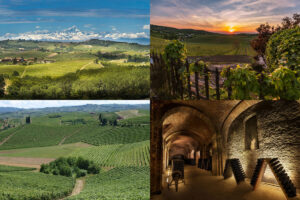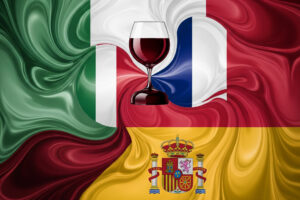As expected, tough times are looming for wine in large retailers. With sales declines that go far beyond the predictable “return to normalcy” after booms in times of Covid and lockdowns. And if in the past few days the data coming in from France testified to a general decline due mainly to lower sales of red wines, now the numbers coming in from Italian shelves are photographing a situation of great suffering. Because prices are going up, but wine consumption in large Italian retailers is going down.
The Uiv/Ismea Observatory’s elaborations, based on NielsenIQ, for the first quarter of 2023, record the lowest levels of sales at the shelf even compared to pre-Covid (2019), with the volumes of wine purchased declining in trend by -6.1% and with values, driven by the inflationary effect of prices, at +2% (673 million euros). “A disadvantaged start”, explains Uiv/Ismea Observatory, “which is reflected in particular in the marketed volumes of still wine (-7.3%) and even more so for PDO products, at -9.2% and with reds at -10.5%, proving that the rise in values is not linked to a demand more oriented toward the premium segment (ordinary wines lose half on average) but to a surplus of production costs that generated an average increase in shelf prices of +8.7%. Bucking the trend, once again, is the sparkling wine type, which grows in volume by 3.9% (+9.8% values), but the increase, in this case, is entirely generated by the exploit of “low cost” sparkling wines (+15.6%), a segment that has an average shelf price of just 4.47 euros/liter and is now worth almost 40% of the volumes sold in large-scale distribution among Italian bubblies. Prosecco (-2.8% volume) and Champagne (-5.8%) are down, while Asti Spumante (+11.8%) and metodo classico (+4% volume) are up, to be compared, however, with the -35% recorded in the same period in 2022”.
“As expected”, said Unione Italiana Vini (Uiv) secretary general Paolo Castelletti, “it will not be an easy year for Italian wine, which even in exports recorded a 4.3% drop in January 2023 over the same period in 2022, with strongly negative changes in non-EU demand. Limited purchasing power in Italy and around the world, along with a surplus in dry raw material costs, demand the utmost attention and concerted action from a supply chain whose companies are directly absorbing part of the price increases in production. But this is clearly not enough”. In general, the most unfavorable dynamics involves - in addition to appellation still wines - Igp wines (volumes at -8.4%), while ordinary wines stop at -4.6%. Heavier losses for red wines, which give up -8.2% in quantity, compared to -5.6% for whites and -11.2% for rosés. Above average was the contraction in organic wines (-8.6%). At the channel level, the most distressed on volumes are the discount stores (-10%), compared with hyper and super that close the quarter at -4% and -5% respectively. Deep red for e-commerce: despite substantial price cuts, online sales mark -19.6% in March.
Going into the details of the best-selling Geographical Indication wines in large-scale distribution, there are negative peaks of -9% for Chianti, -14% for Montepulciano d’Abruzzo, -20% for the Salento type, -18% for Nero d’Avola Sicilia, -20% for Bonarda Oltrepadana, -13% for Barbera from Piedmont and -9% for Lambrusco Emilia and Cannonau from Sardinia. Stable, on the other hand, among the top sellers, the IGT Terre siciliane and Puglia, in slight contraction Valpolicella and Dolcetto piemontese (-5%), while the only one among the big names that is confirmed to be in good health, indeed in constant growth is Vermentino di Sardegna, with +1% in volume. Many appellations registering list increases above the national average: Montepulciano +13%, Piedmont Barbera +11%, Nero d’Avola at +13%, Bonarda at +12%, Verdicchio at +20%.
Copyright © 2000/2025
Contatti: info@winenews.it
Seguici anche su Twitter: @WineNewsIt
Seguici anche su Facebook: @winenewsit
Questo articolo è tratto dall'archivio di WineNews - Tutti i diritti riservati - Copyright © 2000/2025








































































































































































































